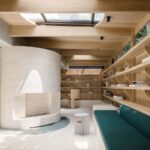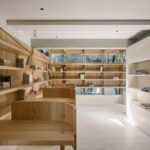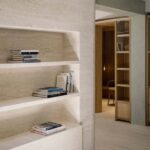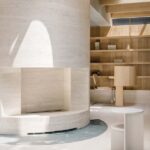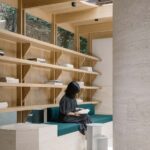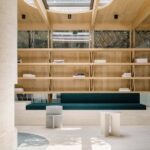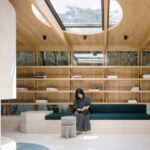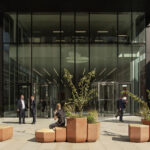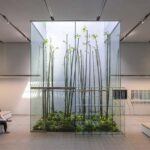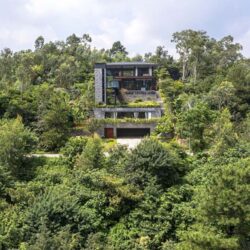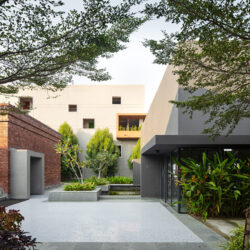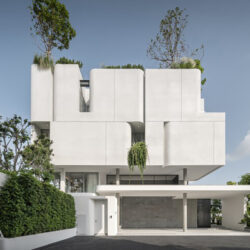In the heart of a 1980s house lies a sanctuary for reading, a haven for intellectual pursuits shared among colleagues or friends. This private reading room, nestled between the realms of public and private, blurs the boundaries of living and working spaces.

Uniting Separate Spaces
Originally comprising two isolated rooms enclosed by sturdy brick walls and nestled alongside a courtyard glasshouse, this project by atelier tao+c transforms these disparate spaces into a cohesive environment. The resulting area now comfortably accommodates a dozen individuals, fostering collaborative reading sessions and providing an ideal setting for intimate lectures.
Embracing Structural Constraints
With the immovability of the existing brick walls as a constraint, the intervention navigates these limitations ingeniously. By removing original doors and windows, three sizable openings, spanning 2-3 meters wide each, seamlessly link the rooms. This open composition dissolves visual barriers, merging walls and structural elements to create a fluid circulation throughout the space.

Integrating Functional Design Elements
Central to the design is a semi-circular set of bookshelves that traverses both brick rooms. These shelves serve a dual purpose, concealing walls to create cozy reading nooks while also visually connecting the rooms. Additionally, structural wall stacks, previously dividing doorways to the glasshouse, are artfully enveloped in off-white travertine, transforming them into sculptural elements that further unify the space.
Illuminating Natural Light
Within the original glasshouse shell, a timber structure is introduced, seamlessly merging with the bookshelves. Skylights of varying shapes adorn the wooden ceiling, filtering sunlight and directing zenithal natural light to the room’s center, enhancing the ambiance for reading.
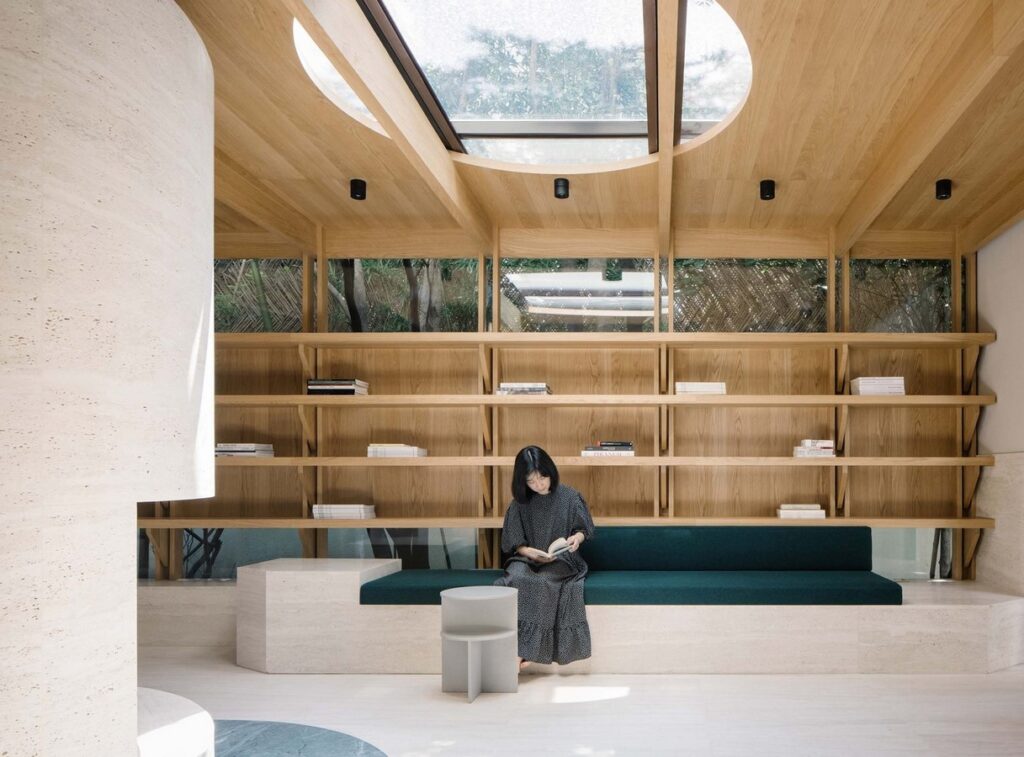
Encouraging Varied Reading Experiences
Despite its modest size of 70 square meters, the reading room offers a diverse range of seating and corners, catering to different reading preferences. From small study tables for solitary focus to a communal sofa for group discussions, each corner invites varied reading gestures and interactions, fostering a dynamic and inclusive reading environment.




